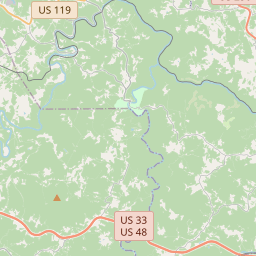Civil War on the Beverly & Fairmont Turnpike
Historical marker location:






April 12, 1861: The Civil War begins with the Confederate attack on Fort Sumter, located in South Carolina's Charleston Harbor.
April 15, 1861: President Abraham Lincoln issues a call for 75,000 volunteers to serve in the Union Army to suppress the rebellion.
May 24, 1861: The first major land battle, known as the First Battle of Bull Run (or First Battle of Manassas), takes place in Virginia. It ends in Confederate victory.
September 17, 1862: The Battle of Antietam in Maryland becomes the bloodiest single-day battle in American history, with heavy casualties on both sides. The Union forces, commanded by General George McClellan, manage to halt Confederate General Robert E. Lee's advance into Union territory.
January 1, 1863: President Lincoln issues the Emancipation Proclamation, declaring that all slaves in Confederate-held territories are to be set free. However, the proclamation does not immediately free all slaves in the United States.
July 1-3, 1863: The Battle of Gettysburg in Pennsylvania takes place, resulting in a significant Union victory and inflicting heavy casualties on Confederate forces. It marks a turning point in the war.
November 19, 1863: President Lincoln delivers the Gettysburg Address, emphasizing the principles of liberty, equality, and the preservation of the Union.
April 9, 1865: General Robert E. Lee surrenders to Union General Ulysses S. Grant at Appomattox Court House in Virginia, effectively ending the Civil War.
April 14, 1865: President Lincoln is assassinated by John Wilkes Booth while attending a play at Ford's Theatre in Washington, D.C.
May 10, 1865: Confederate President Jefferson Davis is captured, signaling the collapse of the Confederate government.
December 6, 1865: The Thirteenth Amendment to the United States Constitution is ratified, officially abolishing slavery throughout the country.
While this timeline provides an overview of key events, it is important to note that the Civil War spanned over four years, from 1861 to 1865, and encompassed numerous battles, campaigns, and political developments that shaped the course of American history.
The Mothman, a legendary creature said to inhabit the area around Point Pleasant, West Virginia, gained national attention in the 1960s. The creature is described as a large, winged humanoid with glowing red eyes.
European settlers began arriving in the late 1770s, with the first permanent settlement established in 1780. The county was officially created in 1843, named after Philip Pendleton Barbour, an influential Virginia politician. During the 1800s, Barbour County became an important center for agriculture, logging, and later, coal mining.
Barbour County played an important role during the American Civil War. It was the site of several battles and skirmishes between Union and Confederate forces, including the Battle of Philippi in 1861, which is considered the first organized land battle of the war. Following the war, the county experienced economic growth as industries such as lumber and textiles flourished.
In the 20th century, Barbour County continued to evolve, with the advent of modern transportation and infrastructure. The construction of railroads allowed for easier access to markets, while the expansion of roads and bridges further connected the county to neighboring areas. Today, Barbour County is known for its scenic beauty, outdoor recreational opportunities, and tight-knit communities that preserve its historical heritage.
Barbour County Timeline
This timeline provides a condensed summary of the historical journey of Barbour County, West Virginia.
- 1789: Barbour County is established as a county in what was then Virginia.
- 1820: Philippi becomes the county seat of Barbour County.
- 1861-1865: Barbour County is deeply affected by the American Civil War.
- 1863: The Battle of Philippi takes place, marking the first organized land action of the war.
- 1929: A flood devastates the communities in Barbour County.
- 1972: Audra State Park is established in the county.
- 1990: The Barbour County Historical Museum is opened in Philippi.